

CarExpert.com.au
The CarExpert team's favourite cars of 2025
3 Days Ago
The flagship i30 Sedan really pushes the 'Premium' envelope with performance and tech to rival entry-level German sedans for much less coin.
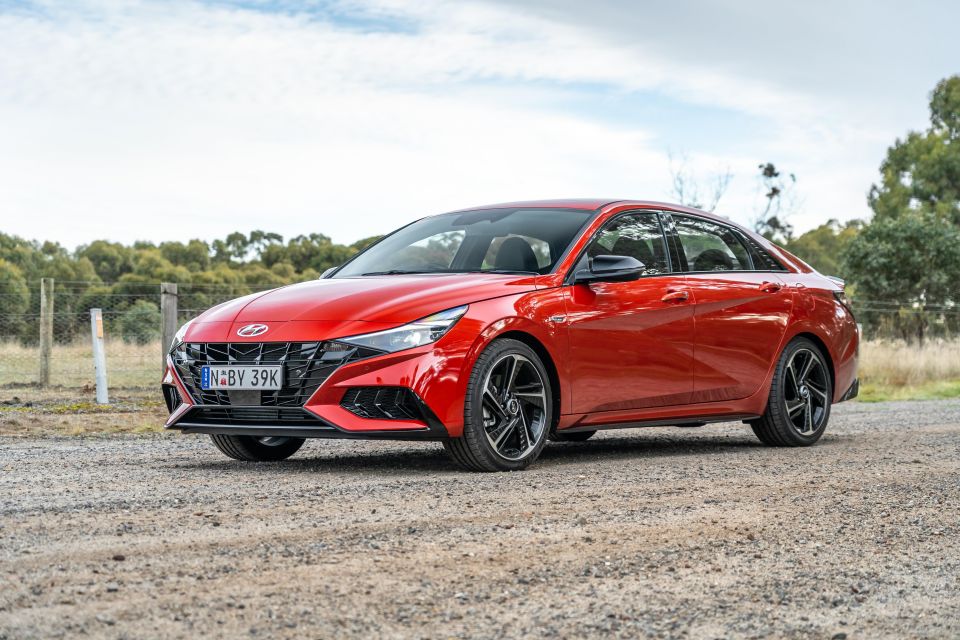
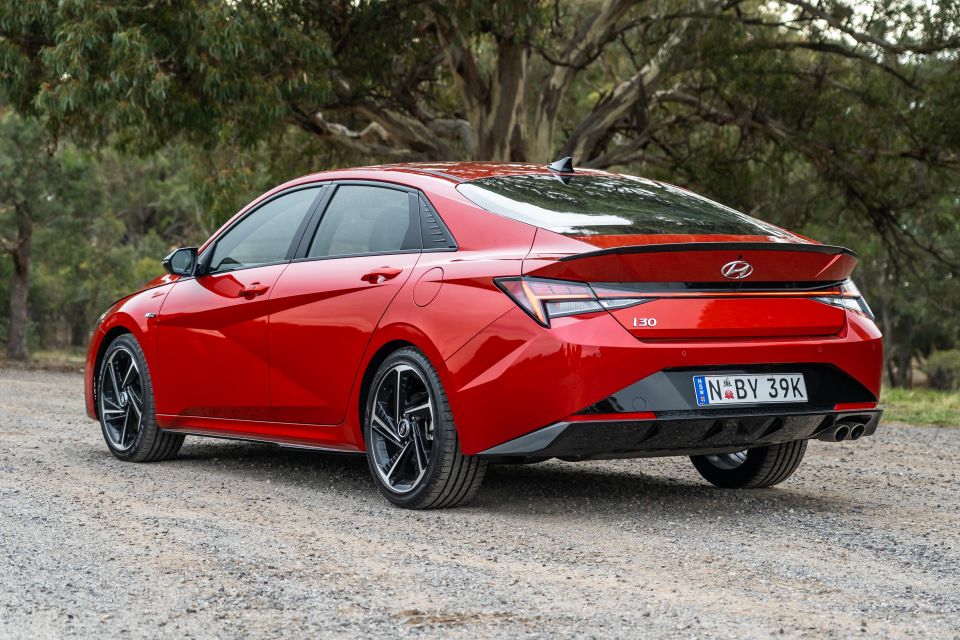

Marketplace Editor
New from
$37,690
excl. on-roads

Marketplace Editor
New from
$37,690
excl. on-roads


Marketplace Editor
New from
$37,690
excl. on-roads

Marketplace Editor
New from
$37,690
excl. on-roads
Quickly see how this car stacks up against its competition. Select any benchmark to see more details.
Where expert car reviews meet expert car buying – CarExpert gives you trusted advice, personalised service and real savings on your next new car.
An Elantra by any other name?
The 2021 Hyundai i30 Sedan N Line Premium (**inhales**) is the Korean brand’s latest assault on the small sedan market, sporting a sharp new look, all-new underpinnings and of course, a new name.
Known elsewhere in the world as the Avante (Korea) and the Elantra (North America), Hyundai Australia opted to align its small sedan naming structure with its popular i30 Hatch line-up, likely to bolster its sales tally as well as resonating better with prospective buyers.
But while the brand’s small cars share names, that’s about it. The i30 Sedan rides on the Hyundai Group’s latest small car platform, gets a completely new design language inside and out, and also gets the brand’s latest engines and tech.
The vehicle you see here starts at $37,290 plus on-road costs, making it the most expensive model in the line-up.
It’s a whole $5000 more than the standard i30 Sedan N Line ($32,290), and $6500 more than the non-turbo i30 Sedan Elite ($30,790). All prices exclude on-road costs.
That works out to a drive-away price of just under $42,000 ($41,976 DA) with the optional Fiery Red exterior paint on our test car ($495).

Competitors in the small-medium sedan segments are getting harder and harder to come by, though Honda offers the Civic VTi-LX sedan from $35,590, Mazda has the 3 G25 GT sedan (from $34,290), there’s the Skoda Octavia 110TSI Style ($34,480) with a sportier and more logical rival in the 140TSI Limited Edition coming soon ($48,490 drive-away), and the soon-to-be facelifted Kia Cerato GT ($35,990 drive-away) which shares a similar 1.6-litre turbo engine.
The Hyundai i30 Sedan N Line Premium’s swoopy coupe-like form, high-end features list and price point could also put it in loose contention with some entry-level premium alternatives such as the BMW 218i M Sport Gran Coupe ($52,900) and Mercedes-Benz CLA200 ($63,400).
Clearly much more affordable and offering more performance than the premium options, but conceptually quite similar.
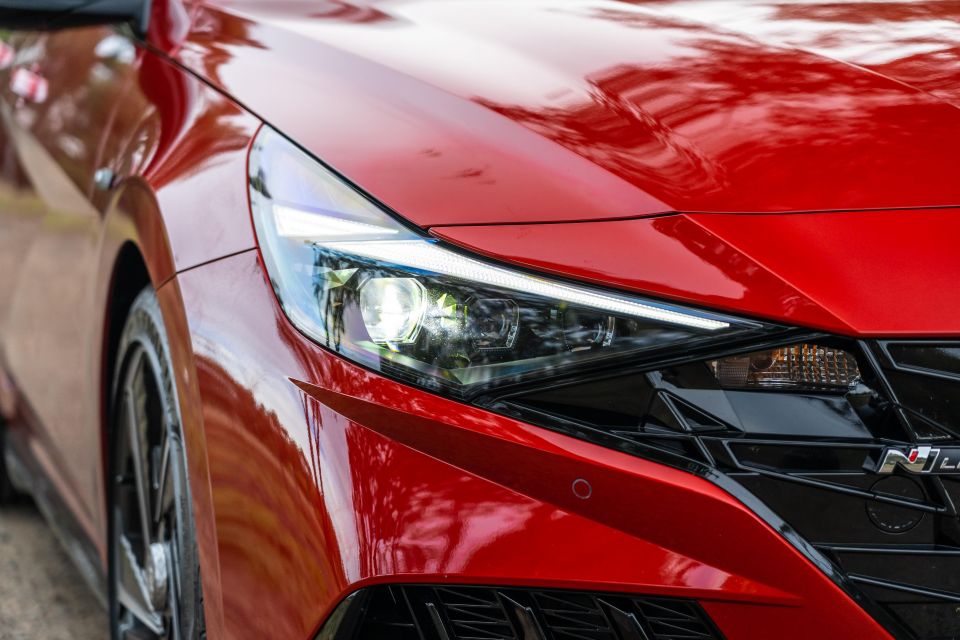
Buy your new car without the stress. It's fast, simple and completely free.

Great service from Travis and team, second time I have used this business would not hesitate to recommend them to anyone
Craig C.
Purchased a Ford Ranger in Sunshine Coast, QLD
CarExpert helped Craig save thousands on his Ford Ranger, now let us save you on your next new car.
Find a dealHeadlining features in the i30 Sedan N Line Premium include:
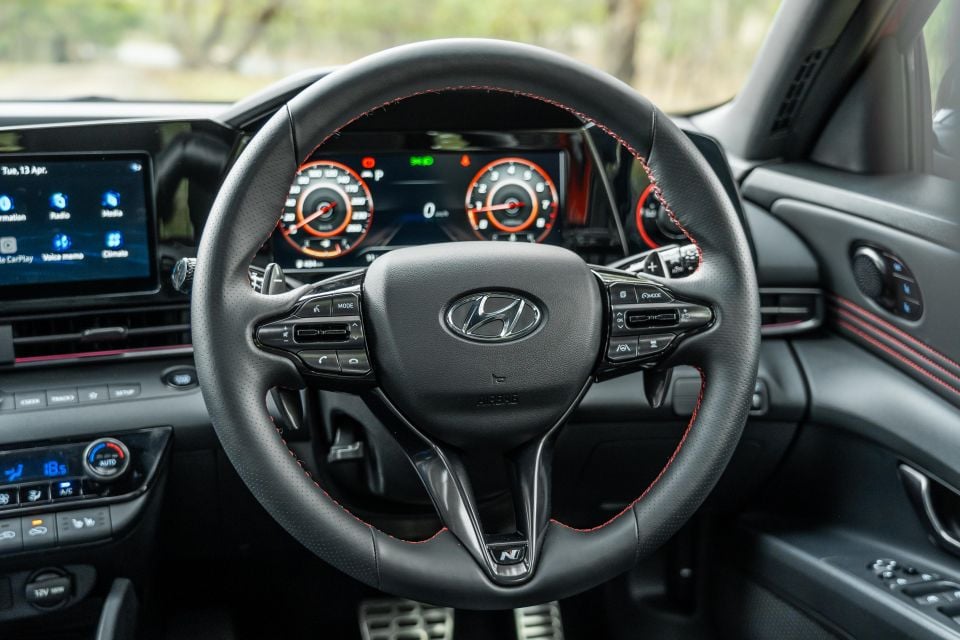
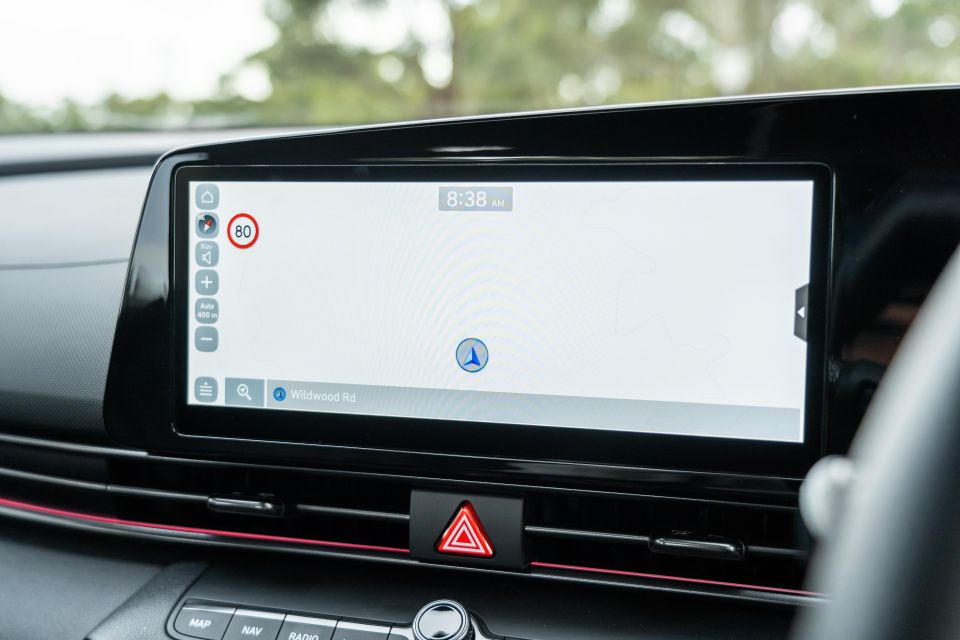
That’s on top of the regular N Line’s specification highlights, which include:
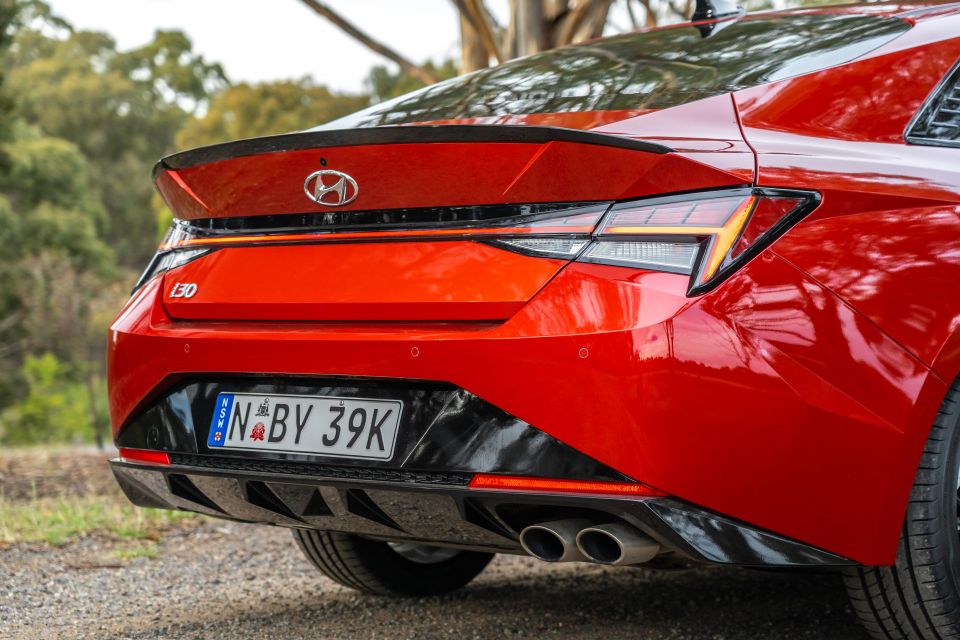
Standard equipment from the base level includes:
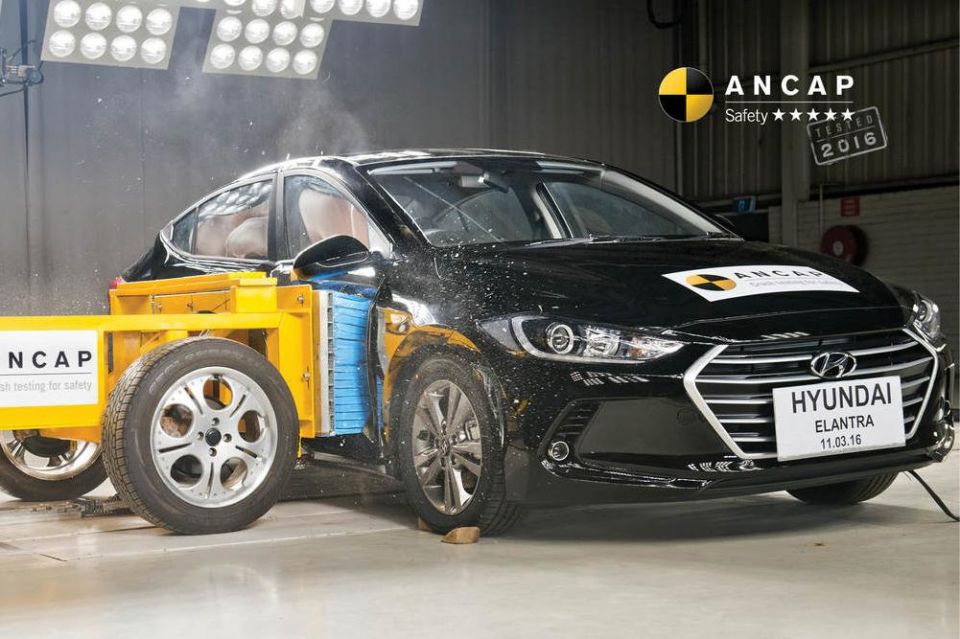
The i30 Sedan has yet to be tested by ANCAP. As it isn’t sold in Europe, there’s no Euro NCAP rating to use as a reference either. It’s worth noting the US’s IIHS awarded the similar US-market Elantra a 2021 Top Safety Pick rating.
All 2021 Hyundai i30 Sedan models come standard with autonomous emergency braking with pedestrian/cyclist detection and a junction turning function, as well as forward-collision warning. Also standard are lane-keep assist, lane-following (centring) assist, rear occupant alert and driver attention monitoring.
Safe exit alert and blind-spot and rear cross-traffic alert systems are available on all bar the base Active – blind-spot monitoring and rear cross-traffic alert in the N Line manual, and blind-spot and rear cross-traffic avoidance assist in the N Line auto, Elite and N Line Premium models.
Rear parking collision avoidance assist is standard on the Elite and N Line Premium.
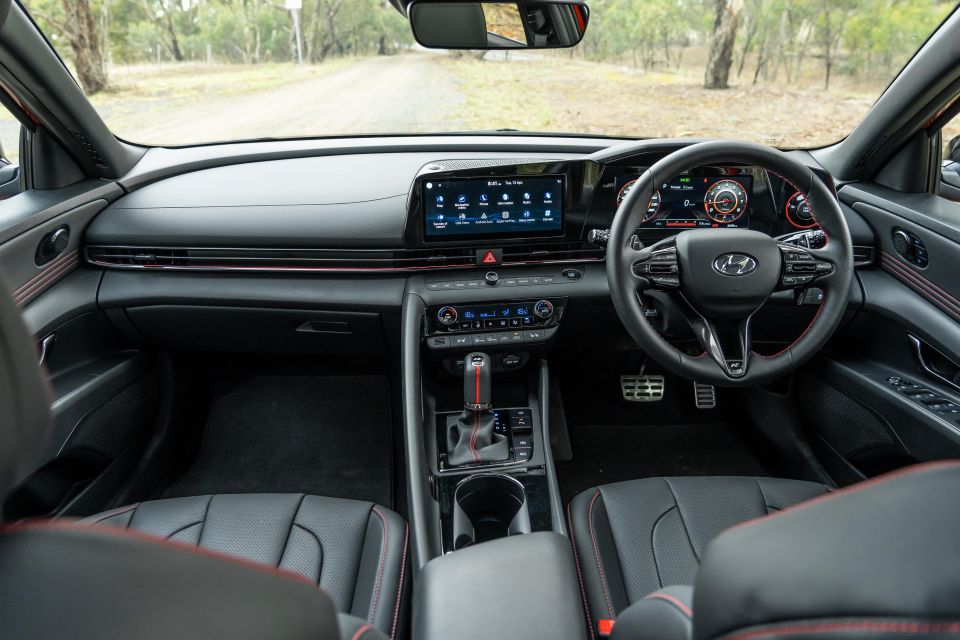
The new i30 Sedan’s cockpit is a world away from the old Elantra’s.
Immediately your attention is drawn to the dual 10.25-inch displays for the driver’s cluster and central infotainment system, which no doubt have been inspired by the MBUX setup in the Mercedes-Benz A-Class.
The displays are crisp, quick to load and animate, and elevate the ambience to the point you might forget you’re in a Hyundai.
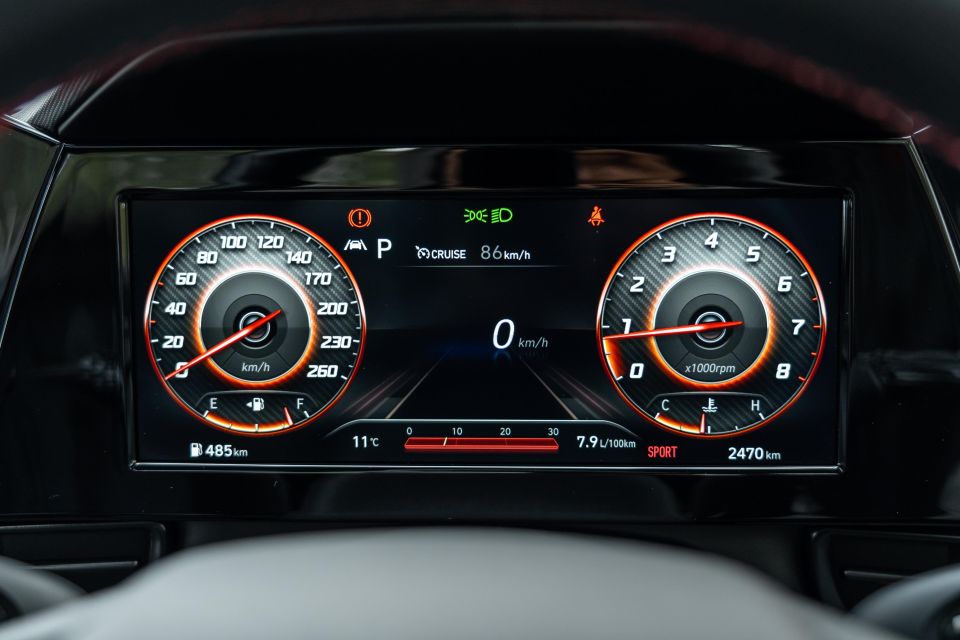
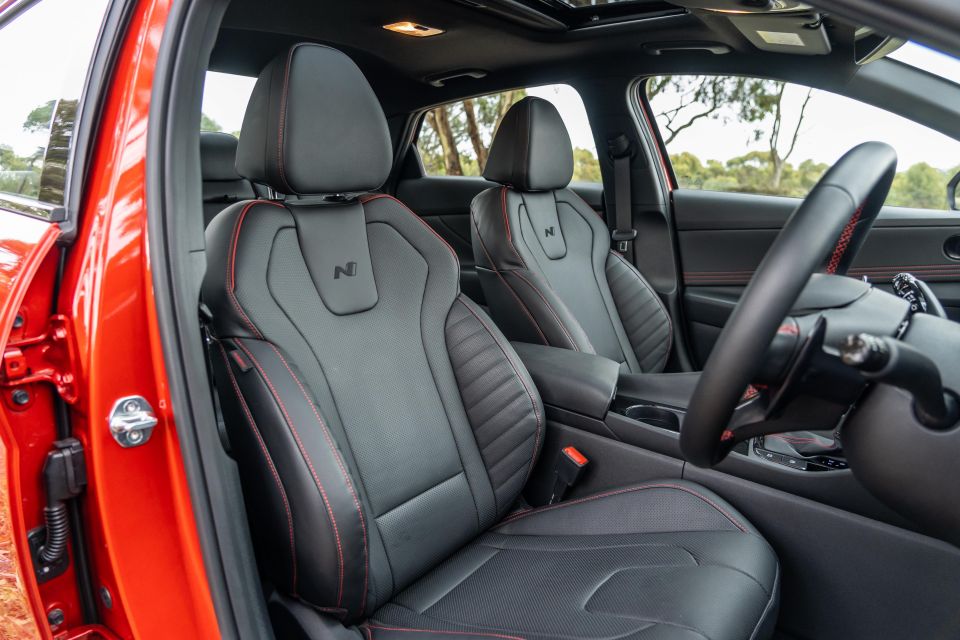

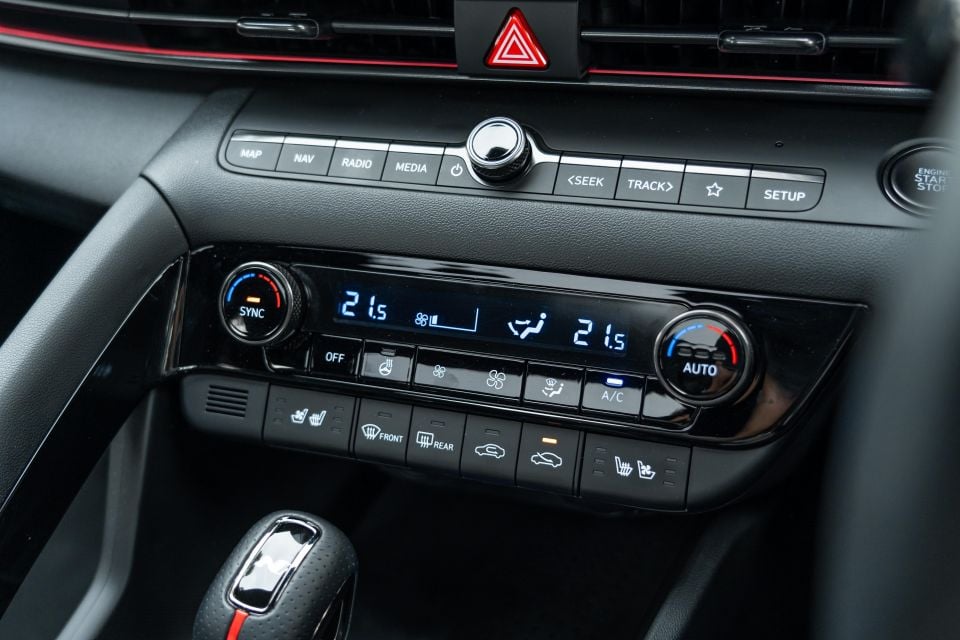
N Line models are equipped with lovely, well-bolstered perforated leather sports seats with red top-stitching and N logos embossed in the backrests. They’re comfortable, offer good electric adjustment for the driver (N Line Premium only), as well as being heated and cooled. Very nice.
All the touch points are really nice – the smooth leather steering wheel with perforations, joystick-style shifter, soft padded surfaces for the centre armrest and door cards – though poke and prod around a little more and you’ll find mostly hard plastics adorning the dashboard, doors and along the centre console.
Make of that what you will, but in a $40,000 small car with premium aspirations, the scratchy surfaces smell of cost cutting.
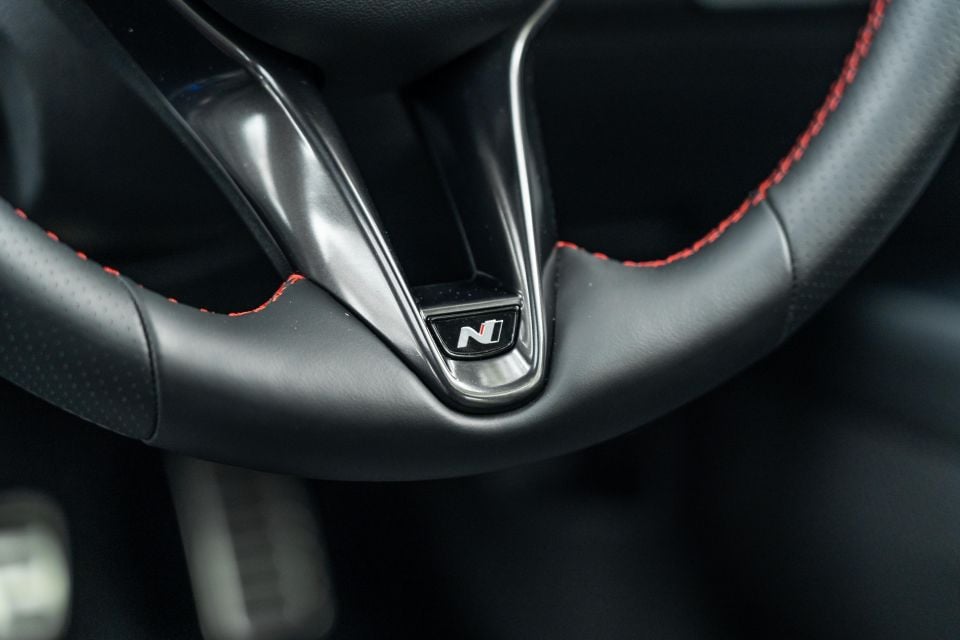
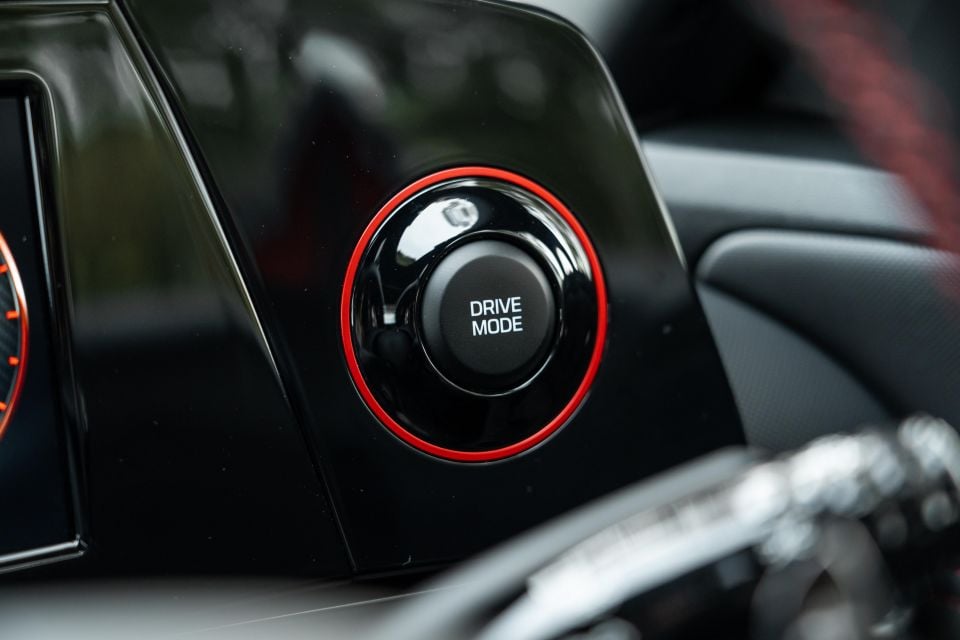
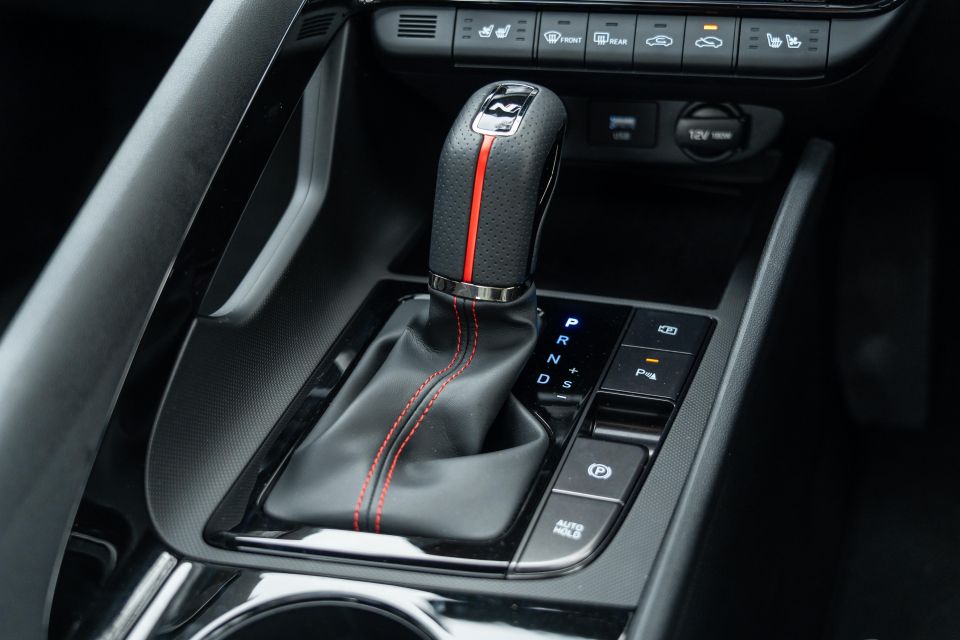

Space and storage in the first row is good, though. I’m a little over six-foot-one and felt like I had heaps of room up front, as well as plenty of space for phones, wallets, keys and bottles. The wireless charging pad and USB points hidden under the centre stack are a good way of hiding messy cables, too.
The central infotainment system runs the Hyundai/Kia Group’s latest interface, which with native navigation and wired smartphone mirroring works flawlessly. I’ve said this in other Hyundai reviews, but the level of features (incl. DAB+, navigation and Bluetooth) combined with the ease of use makes it a winer.
Shame Hyundai can’t work in wireless Apple CarPlay and Android Auto with navigation-equipped systems like BMW and the Volkswagen Group have, because it’s all ready to go with the wireless charge pad. Hopefully a future running upgrade.
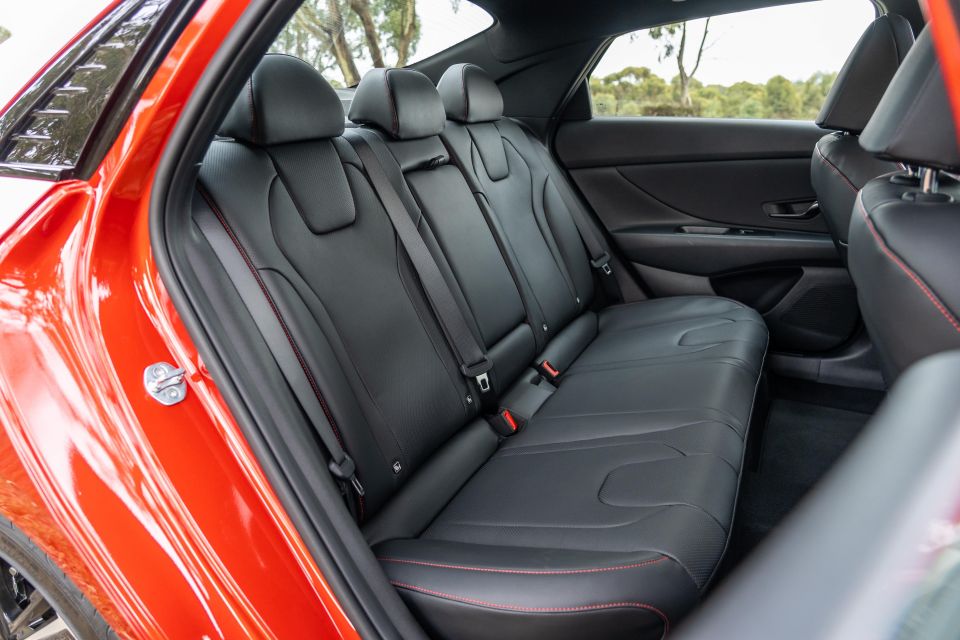

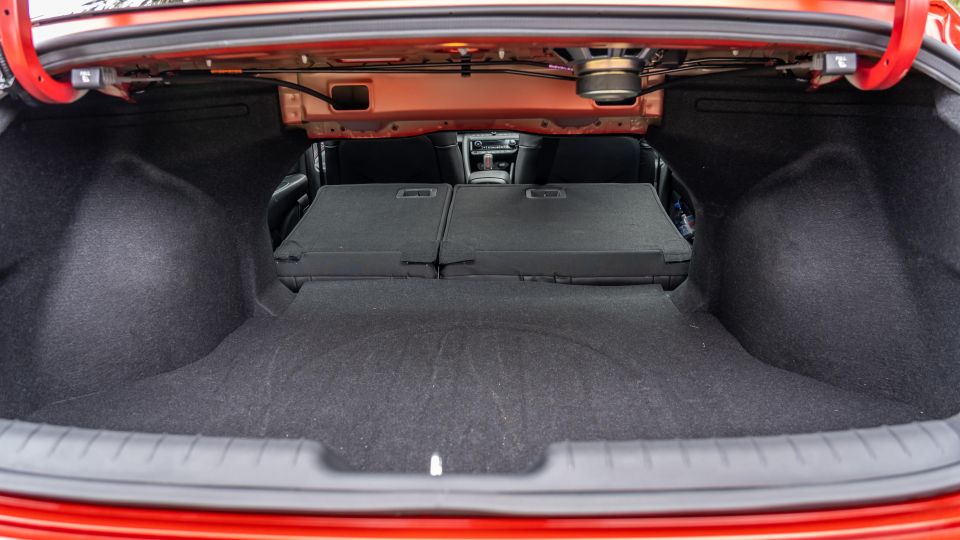
Moving into the second row, the coupe-style roofline does cut into headroom just a bit if you’re on the taller side like me. Two average sized adults should fit in the back fine, but taller occupants will be short for headroom and three across would be a tight fit.
ISOFIX mounts on the outboard seats will keep the kiddies secure, and there’s also rear air vents, a fold-down centre armrest with cupholders, and map pockets on the front seatbacks. Sadly, there aren’t rear USB charge ports to keep mobile devices topped up.
Under the bootlid is a 474L luggage area which is almost 100L more than the i30 Hatch with all five seats in play. Under the boot floor is a space saver spare.
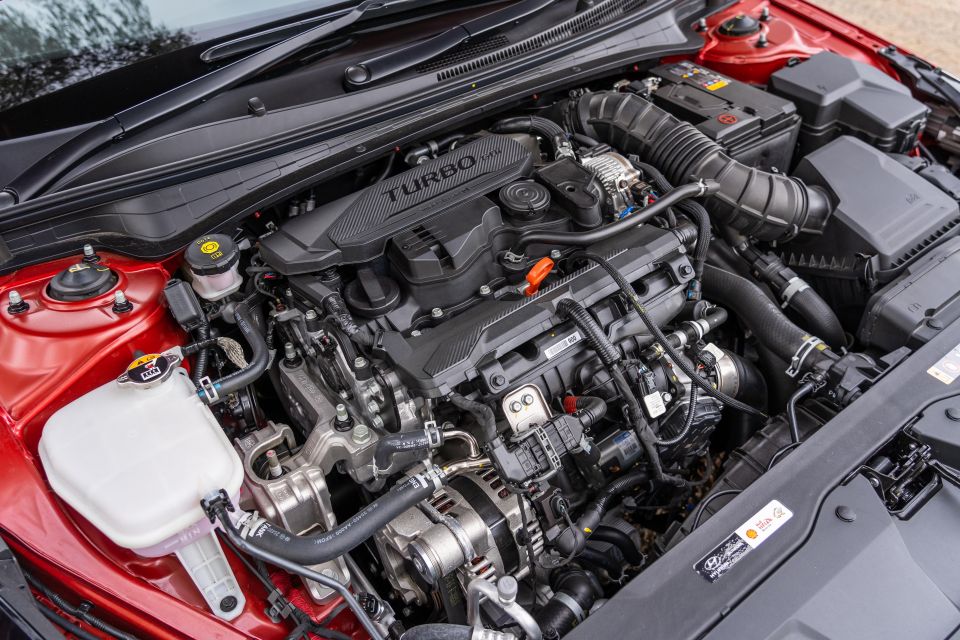
Hyundai i30 N Line models (Hatch and Sedan) are powered by a familiar 1.6-litre turbocharged four-cylinder petrol engine, generating 150kW (6000rpm) and 265Nm (1500-4500rpm).
For this new ‘Smartstream’ generation, Hyundai has given the 1.6L turbo Continuously Variable Valve Duration (CVVD) which claims to improve efficiency as well as performance by regulating the duration of valve opening and closing to suit driving conditions.
Hyundai claims the CVVD-equipped 1.6 T-GDi petrol cuts fuel use by 5.0 per cent and emissions by up to 12.0 per cent, while boosting performance by 4.0 per cent.

Drive is sent exclusively to the front wheels via a seven-speed dual-clutch transmission (dry type) with steering-mounted paddle shifters in the N Line Premium as standard and optional on the standard N Line. A six-speed manual is standard on the base N Line.
Combined fuel use is rated at a rather miserly 6.8L/100km – 0.2L/100km less than the previous-generation Elantra Sport. The i30 N Line can also run on 91 RON regular unleaded.
We saw an indicated 7.2L/100km during our week with the car, which included a week’s worth of peak-hour commuting (24km each way, city and freeway roads). Not bad given the previous Elantra Sport could get a little thirsty, and the latest model continues to go without idle stop/start tech offered abroad.
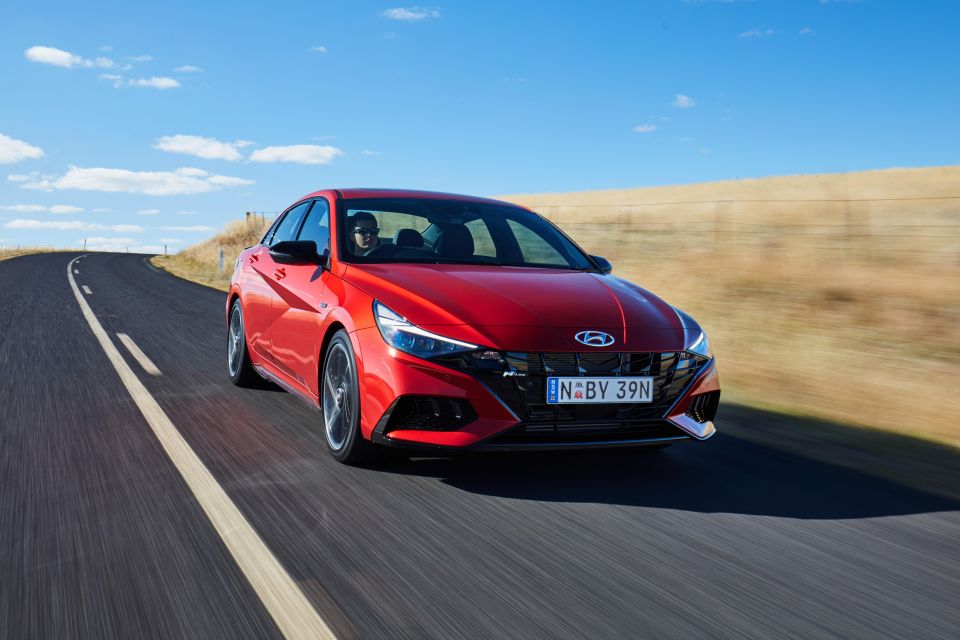
Very well, very well indeed.
The previous-generation Elantra (and current i30 Hatch) already drove well and continue to do so, but the new, lighter platform of the i30 Sedan with turbo power is a compelling package in the super competitive small passenger class.
It feels low, wide and hunkered down. Somewhat European in overall feel, with a taut chassis and stable ride at all speeds.
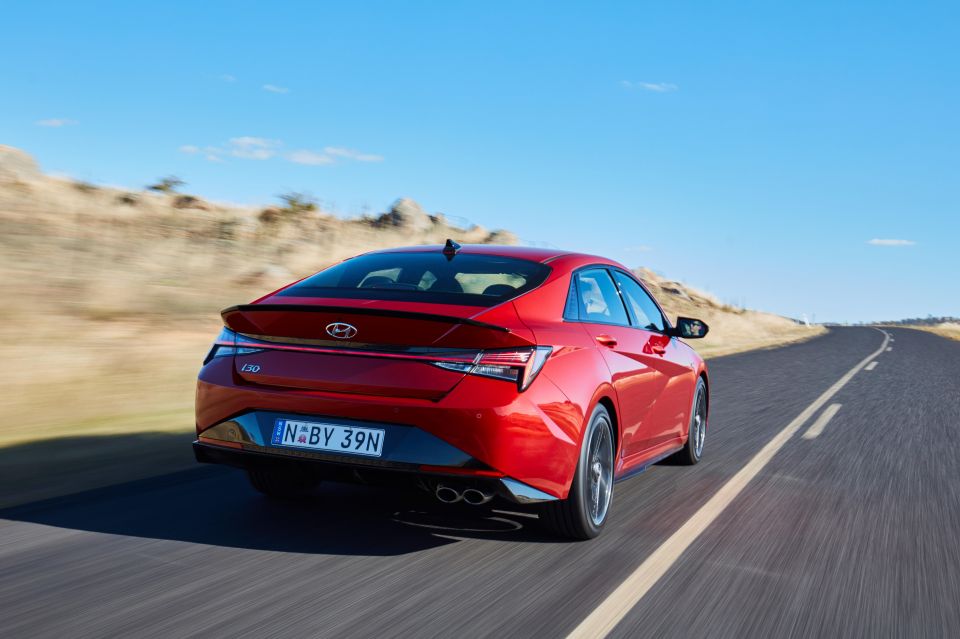
Where expert car reviews meet expert car buying – CarExpert gives you trusted advice, personalised service and real savings on your next new car.
Despite the carryover outputs for the 1.6L turbo, the revised drivetrain feels more eager and more refined than the old Elantra Sport and Kia Cerato GT. Low-speed behaviour is improved, though still not without the slight hesitation at takeoff that is a dual-clutch trademark, and once moving the transmission is super snappy and smooth.
There’s even a raspy exhaust note out the back which sounds quite sporty when you plant your right foot. It’s good to see Hyundai isn’t just limiting the N Line’s sporting feel to just the engine’s outputs.
It’s a sharp handler, too, with an eager front-end and quick, communicative steering that feels fluid in motion and accurate in feedback. Whether you’re doing the daily commute or tearing up a winding B-road, it’s really engaging and is quite a bit of fun.
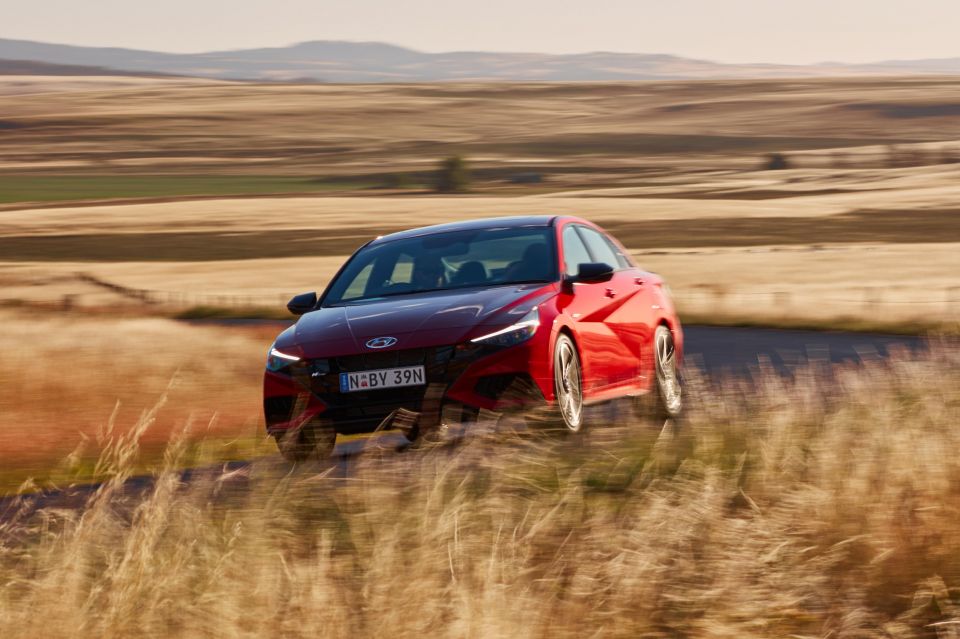
That’s not to say it rides poorly, either. In fact, even the N Line’s sports suspension is well calibrated for Australia’s roads. It errs on the side of firm, but bump absorption and body roll are balanced and maintain a good level of composure.
If anything, it’s competitive with mainstream rivals as well as the premium alternatives mentioned earlier. It really is very impessive.
What isn’t so great is the level of tyre noise that enters the cabin, particularly on coarse-chip highways that are oh-so-common in Australia. There’s an intrusive, echoey level of roar that means you have to raise your voice to have a conversation at times, which is really the only drawback from the drive experience.
It’s worth noting the i30 Sedan N Line is riding on 18-inch wheels shod in lower profile 235/40 Goodyear Eagle F1 tyres. Given the grip on offer, you can forgive the road noise somewhat, also keeping in mind rivals like the Civic have similar NVH drawbacks.
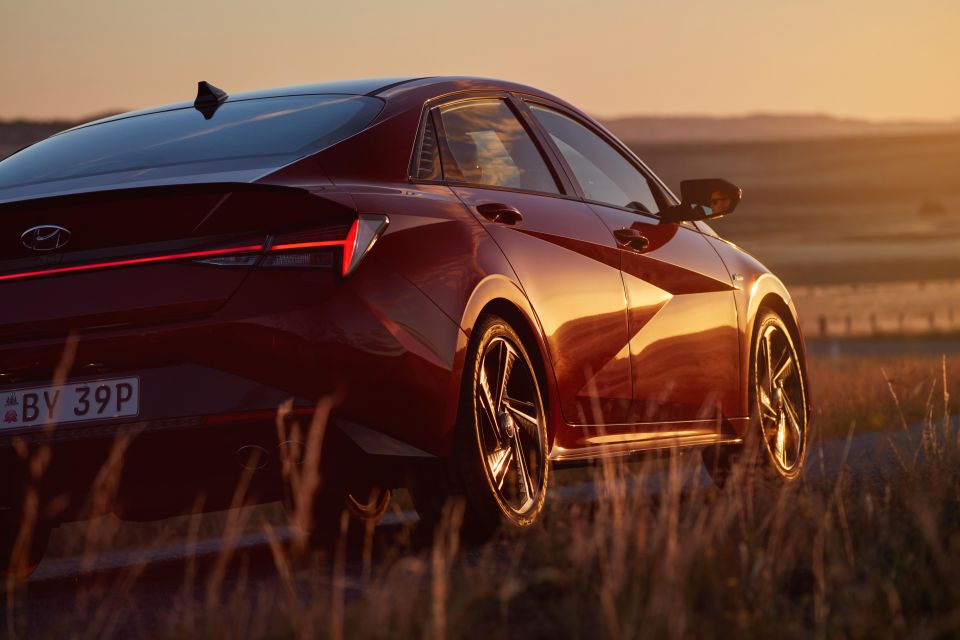
It otherwise settles into a happy cruise at 100-110km/h, humming at just above 2000rpm in seventh gear. The adaptive cruise control with stop/go and Lane Following Assist is great for heavy-traffic commuting on freeways, and the wider Hyundai SmartSense suite (e.g. blind-spot assist, rear cross-traffic alert) come in handy during day-to-day use.
You can also flick between drive modes (Eco, Normal, Sport) which adjust throttle response and steering weight depending on mode, as well as changing the theme of the digital dials should you have it set to do so – I permanently switched to the sports dials to better suit the N Line’s persona.
The more urgent response in Sport is noticed as is the quickened steering with added weight. We found the synthesised engine noise to be a little too fake for our liking, and 95 per cent of driving is best left for Normal mode.
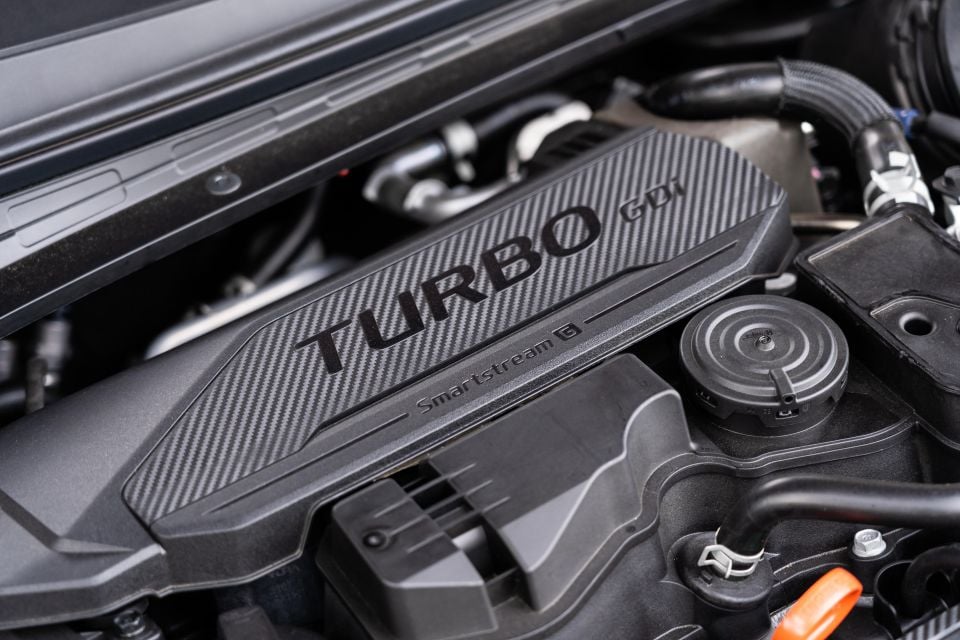
The 2021 Hyundai i30 Sedan offers a five-year, unlimited-kilometre warranty and lifetime capped-price servicing.
Maintenance for N Line models is required every 12 months or 10,000 kilometres, whichever comes first. That’s shorter than the 15,000km for non-turbo versions.
The first five visits cost $269, $269, $269, $309 and $409 – or $1525 over 60 months/50,000km.
Additional benefits include up to 10 years of roadside assistance provided you service with your Hyundai dealer, and up to 10 years of free sat-nav map updates.
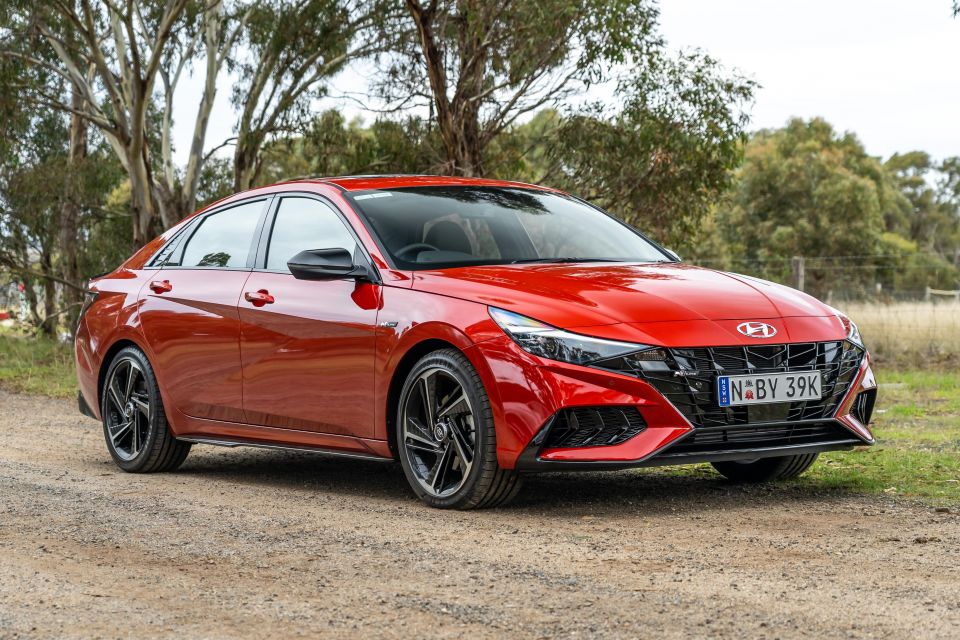
The flagship Hyundai i30 Sedan (at least until the full-blown N arrives later this year) goes a long way to prove that you can have a sporty compact four-door coupe without spending big money on a premium badge.
For some $20k-30k less than a BMW 2 Series Gran Coupe or Mercedes-Benz CLA with similar outputs, you can have a sleek, sporty and tech-laden small sedan loaded with creature comforts and swanky displays.
It doesn’t do a lot wrong, bar some cheap-feeling plastics and road noise on the freeway, it’s a fun, capable all-rounder that will turn heads – especially when that full-width LED tail light bar is turned on.
For me, this is the pick of the affordable small sedan class if you’re after a more sporty offering. Look at the Mazda 3 if comfort and luxury is your priority, or the Skoda Octavia is you want more space and tech.
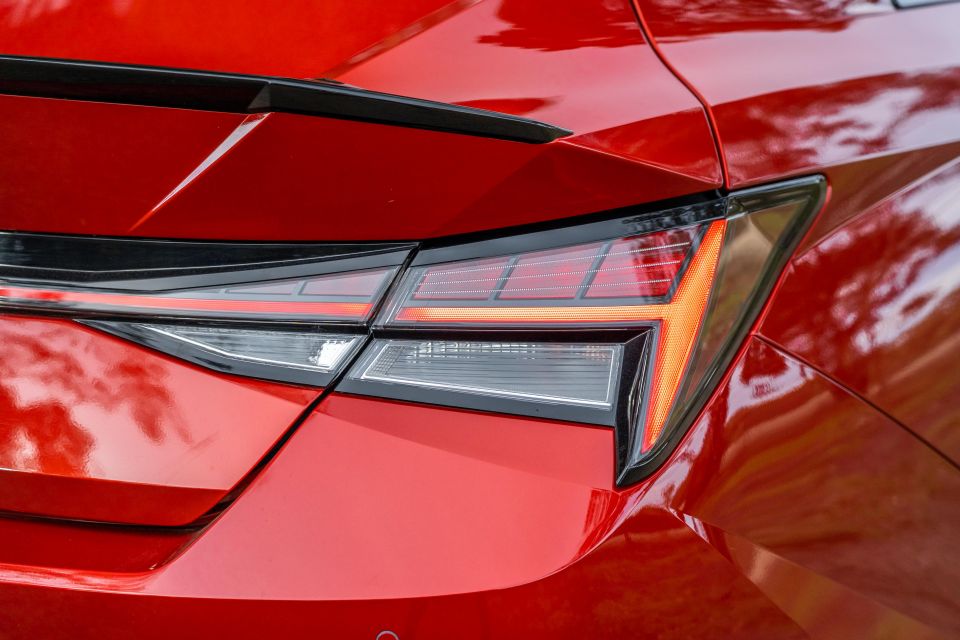
Click the images for the full gallery
Where expert car reviews meet expert car buying – CarExpert gives you trusted advice, personalised service and real savings on your next new car.
James Wong is an automotive journalist and former PR consultant, recognised among Australia’s most prolific motoring writers.


CarExpert.com.au
3 Days Ago


Max Davies
4 Days Ago


Damion Smy
4 Days Ago


Max Davies
5 Days Ago


Max Davies
7 Days Ago


Damion Smy
8 Days Ago